19.02.2007
V.Faibisovich. The First Six Years
(The story of the chess branch)
Any anniversary always arouses an interest in the origins. Especially if at the issue is a unique center; you will find nothing like it either in our country or in the whole world.
On June 1, 1935 in Smolny took place a conference on out-of-school work. Summing it up, the secretary of the Central Committee of C.P.S.U.(b) A.A.Zhdanov (1896 - 1948) uttered the key words: «…Leningrad, having a vast net of cultural institutions, manned by highly skilled scientific, technical and art cadre, can and must take the lead in the development of out-of-school work, serving as an example for other regions and territories of the USSR…
There is a ripe necessity to establish as soon as possible the city Palace of culture for children by way of allotment of the best building in the city for this purpose …»
The search for such a building was not long. On September 9, 1935 city newspapers published the Lensoviet presidium’s decree, which had been adopted the day before:
«1.To establish in Leningrad the Palace of Culture for children, integrating into it all the city out-of-school children institutions existing at present….
2. To allot at the disposal of the Palace of Culture for children all the buildings situated in the territory of former Anichkov estate…»
Two days later, on September 11, 1935, the “Leninskiye Iskry” (“Lenin’s Sparks”) newspaper dedicated its whole front page to this decree. Here for the first time we can read about the children’s chess club to be established at the Palace.
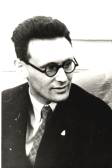
Soon after GM M.M. Botvinnik (1911 – 1995), who had at the moment already been a twice champion of the USSR and a universally recognized leader of Soviet chessplayers, made a more detailed statement: «…It is necessary to create not just a chess circle, but a separate chess club, and to allocate it a decent premises at that. Of first necessity are a hall for displays and lections and another two or three rooms for systematic work with children. Moreover, the chess club should be a mass one…»
It is also important to note that the idea of founding the children’s chess club was approved by A.S.Bubnov (1883 - 1940), a People’s Commissar for education, who had visited the building site of the Palace.
It is known that a number of institutions have begun functioning while the designing, building and finishing works were still going on. This fact is corroborated in particular by information in the “Smena” (“The Successors”) newspaper dated November 11, 1935: «Children institutions began moving into the Palace of Pioneers and Schoolchildren in the Anichkov estate. The House of artistic education, children’s technical station and tourist station have already moved there». In the beginning of 1936 young chess- and checkers-players had got a small room No.45 – a first floor lobby of the artistic department. This fact did not mean the abandonment of M.M.Botvinnik’s plan. Chess club was to be situated in the main building, and its opening had been planned as a part and parcel of the official grand inauguration of the Palace itself.
First chessplayers to visit room No.45 were senior students of Leningrad high schools. In April, 1936 they intended to hold a regular junior city championship here. But at the nick of time the tournament was moved to the Education workers’ House of culture (Moika 94).
The champion’s title went to Alexander Yegorov (1919 - 1943).
Having graduated from the Technological institute, he went to the war and died at the front…
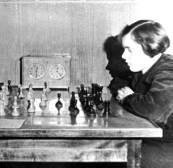
In the same year of 1936 the winner of Leningrad ladies’ junior championship was Kira Zvorykina, in the future an engineer, a WGM, three times USSR champion, twice Olympic champion as a member of the USSR team, one of the participants of the 1960 match for the title of World champion.
At present Kira Alexeyevna lives in Moscow.
The opening of the Palace of Pioneers’ garden on June 12, 1936 became a noticeable event. On the picture we can see the chess part of the holiday.
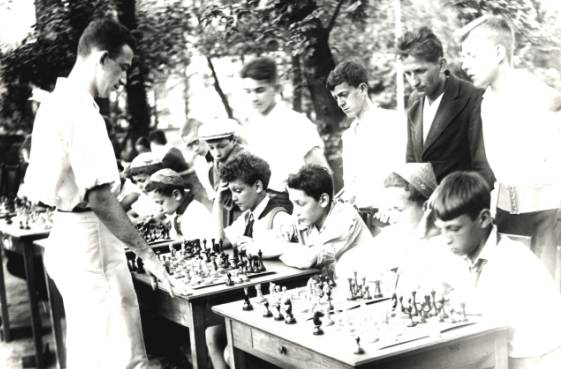
A simultaneous display (among the participants young Mark Taimanov is easily recognizable) is given by A.S.Budo (1909 - 1982), first head of the chess club. Alexander Semionovich was educated as an economist, and most of his life had been devoted to his principal trade. On the peak of his professional career he had held a high enough position, heading the planning and economy department of a great building institution “Glavzapstroy”. A.S.Budo had been working at the Palace not for long, and that was his second job only. Nevertheless, he was a rather strong chessplayer, who had twice taken part in the USSR championships’ finals, and a competent organizer. Fundamental principles of club’s operation laid down in his time has been working to this day.
During this summer the players of the Palace had achieved the first, even if insignificant in comparison with the further ones, success. They were the first in the team competitions of the city parks and gardens.
In February of 1937 the Palace and its chess club were ceremonially opened.
In the “64” weekly dated February 28, 1937 we read: «…This club is magnificent. Neither in Leningrad not in any other city of the USSR have we ever seen such a comfortable atmosphere, artistic appearance and wonderful stock before…
In the first room, chess reading hall, there hangs a portrait of M.M.Botvinnik, inside two niches stand a meter-high figures of a rook and a knight. Second room is intended for easy games; the glass case with a photo exhibition dedicated to Nottingham tournament has not been finished yet. Then there are a tournament hall and a minor lection hall. Here the methodological studies of the circles and serious clocked games will take place. The walls of the tournament hall are decorated with N.E.Radlov’s artistic cartoons, in the lection hall the massive emblems of the chess club carved from oak – large chess pieces on a shield – stay in your memory…45 sets of chess tables have been custom-made for the club, there are more than 100 sets of pieces in its stock… Chief of the club is the order-bearing GM M.M.Botvinnik.
In this wonderful club chess Leningrad will grow the new cadre of talented masters”.
There is a short comment to this story.
Four rooms you have read about were not long ago occupied by the Junior Cosmonautics club named after German Titov, and now there is the Anichkov Palace Museum there. Out of prewar pieces of club’s interior in some unfathomable way (do not forget the first blockade winter!) remained intact only N.E.Radlov’s cartoons and the oak-carven emblem, which you can see in the room No.66 of the Sports Children and Youth School of Olympic Reserve No.2’s chess department.
An event to remember was the simultaneous display of the American GM R. Fine(1914 - 1993), who had at the time been one of the strongest chessplayers in the world. It was held on March 24, 1937.
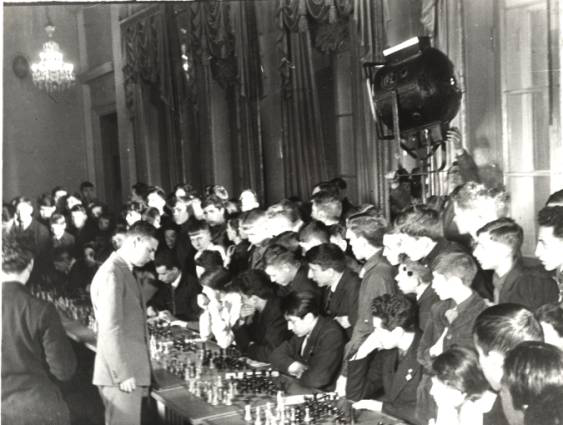
Thirty best junior players offered stubborn resistance to the Grand master, but still the result had been in R. Fine’s favor:+14 – 7=9. The first one to beat the GM was Kolya Kopylov, a pupil of Oktyabrsky district school No. 33.
Later Candidate of Engineering N.G.Kopylov (1919 - 1995) would play twice in the finals of the USSR championships and win the 1953 USSR team championship as a member of our city team. Since1959 NikolayGeorgiyevichhadbeenlivinginVoronezh.
In December 1937 the pupils of the club have tested their strength against their own chief for the first time.
M.M.Botvinnik became wisefrom Fine’sexperience and cut the number of participants down to twenty. On the whole he was more successful than his predecessor, although had also failed to avoid defeats: +11– 2=7. One of the two lucky winners was Vasya Byvshev, the pupil of Dzerzhinsky District school No.4.
The Merited Coach of Russia V.M.Byvshev (1922 - 1998), a lawyer by trade, a war veteran, was one of the strongest Soviet masters in the 1950s.
He had been teaching in the Palace of Pioneers until the very last days of his life.
The most famous out of a multitude of Vassily Mikhailovich’s pupils are Irina Levitina and Alexander Khalifman.
In the very beginning of 1938 the USSR junior championship was held at the Palace.
In team total (the teams’ lineup had included 2 men chess boards, 1 lady chess board and 1 checker board) the home team was the first: Yu. Shteinsapir, Ye. Stoliar, O.Ignatieva, A.Vinderman.
In the individual classification the winner in the elder group was Moscow schoolboy Vasia Smyslov. This was the first significant success in the brilliant carrier of future world champion.
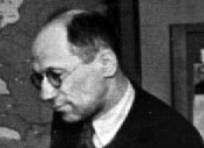
Since 1938 the head of the chess club had been S.O.Vainshtein (1894 - 1942).
Samuil Osipovich knew all the principal European languages perfectly. He was one of the most authoritative chess workers. Suffice it to say that he had headed the All-Russian chess union as early as in 1924 and at the same time was both publisher and editor of the “Shakhmatnyi Listok” (“Chess Leaflet”) magazine.
He had shared the common tragic fate with hundred thousands people of Leningrad, not surviving the blockade.
In spring of 1938 the chess team of the Palace took part in the “adult” team championship of Leningrad. Its ability to struggle against the much more experienced opponents as their equal was predetermined by the regulations of the competitions. Every team was to include 30 men’s boards and 10 ladies’ ones, and no other collectives had had such a long “bench”. And still the first place was a pleasant surprise for the Palace chessplayers. The best result in the victorious team was shown by the pupil of the Vassileostrovsky District school No.8 Sasha Cherepkov, who had been playing on the second board.
Alexander Vassilyevich Cherepkov is a combatant officer, who has gone through the Great Patriotic War from Tikhvin to Prague and been awarded several military orders and medals. After the war he had returned to the Palace and in the next thirty years trained many well-known masters, finding time to conquer his own sport summits at that. Three times champion of Leningrad, winner and prize winner of many tournaments, the Merited Coach of Russia, Alexander Vassilyevich successfully plays in the seniors’ competitions to this very day.
In 1938 the regular junior championship of the city was held at the Palace. ThewinnerwasKyrillVinogradov.
Kyrill Borisovich Vinogradov (1921 - 2003) was a prize winner of the 1947 Leningrad championship, Professor of the Leningrad University, Doctor of History.
In the very end of 1938 a guest of the club was Paul Keres (1916 - 1975), an outstanding Estonian GM, who had already at the time been rightfully considered one of the pretenders for the World champion title. He had not followed M.M.Botvinnik’s suit and, just like R. Fine, had given the simultaneous display on 30 boards. The result (+ 11 – 11 =8) confirmed the growing strength of the kids.
The year 1939 was marked in the history of the Palace with the first New Year fir-tree. Chessplayers had also for the first time staged an event that was later to become traditional: in February the major chess festival with participation of best Leningrad players took place there. However, the leading masters used to visit the Palace not only on high days and holidays. S.O. Vainshtein managed to involve in regular pedagogical work with children such renowned chessplayers as P.A.Romanovsky, I.L.Rabinovich, and A.P.Sokolsky.
Grand masters G.Ya.Loewenfisch and M.M.Botvinnik used to give lessons to the most promising juniors.
The 1939 Leningrad schoolboy’s championship did not reveal a sole winner. The title was shared between Igor Maslov and Mikhail Fomishkin.
Both of them did not returned from war…
In the end of November, 1939 the Palace chessplayers convincingly defeated the “Spartak” sport society team in a grand match on 100 boards.
In 1940 some other match competitions were held. In spring the home Kiev team was more successful in a two-round tournament on 6 boards (this was the first visit to another city). Alas, in December a radiomatch with young Moscow players had also been lost (3,5 : 6,5). True, before that the Palace team had defeated (7:3) the opponents from the Leningrad City chess club. In the same year in the junior city championship the outstanding masters – I.L.Rabinovich (1891 - 1942) and A.F.Ilyin-Zhenevsky (1894 - 1941) – played hors concours for the first time. It was the beginning of another tradition that had been kept for some decades. On this occasion the masters had taken first two places, and the champion title went to pupil of the Vassileostrovsky District school No.16 Fima Stoliar, who had won the third place.
The Merited Coach of Russia Yefim Samoilovich Stoliar, winner of the 1955 USSR team championship as a member of the RSFSR team, had for many years been the coach of chessplayers in Leningrad “Burevestnik” sport society. Atpresentheoccasionallyplaysintheseniortournaments.
In May, 1940 the city rally of schoolchildren-chessplayers was held at the Palace. On the photo, which is published here for the first time, we can see the participants of the rally in the concert hall of the main building.
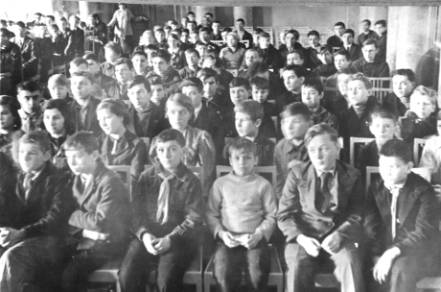
In 1940 Larissa Volpert began her studies at the Palace.
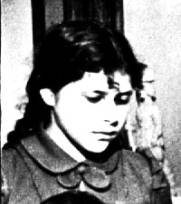
WGM Larissa Ilyinichna Volpert was winner and prize winner of many competitions, three times USSR champion, Professor of Tartu University. Since the end of 1960s she has been living in Estonia, but always readily comes to her native city.
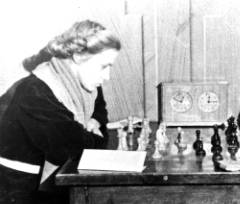
Another noted chessplayer, one of the first alumni of the club, Olga Ignatieva, became in April, 1941 the ladies’ champion of Leningrad.
Later on WGM Olga Mikhailovna Ignatieva (1920 - 1999) had won city championships for two more times; after moving to Moscow she became twice champion of the capital and аrunner-up of the 1951 USSR championship and of the 1952 candidates tournament.
The last prewar city championship was over in May, 1941.
Having left behind master A.P.Sokolsky, who had been playing hors concours, Mark Taimanov, a pupil of the music school under the Conservatory, confidently won the first place.
Mark Yevgenyevich Taimanov is the 1956 USSR champion, the winner of the 1956 World Chess Olympiad as a member of the USSR team, twice the participant of the candidates competitions, five times Leningrad champion, twice senior World champion, an author of several books and a lot of newspaper and magazine publications. AndthisisonlyapartofthePetersburgGM’sservicerecord.
…Understandably, the children voices ceased at the Palace after the war had begun.
During the War the civilian hospital had been quartered here. Young chessplayers had begun to come back to the familiar building shortly before the complete breaking the blockade late in fall of 1943. But this is the subject of our next story.
ENDNOTE: This article was written for the Anichkov Palace site.
